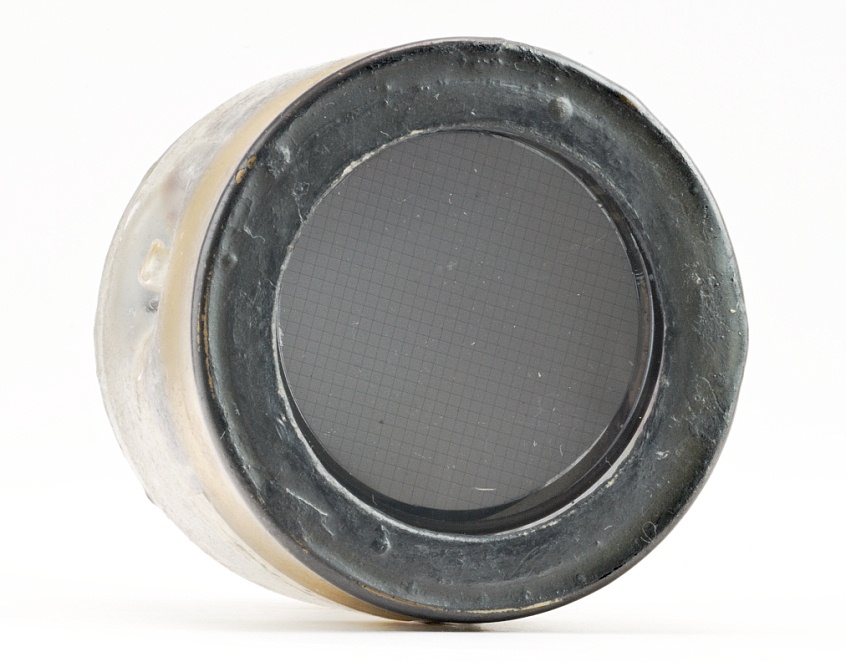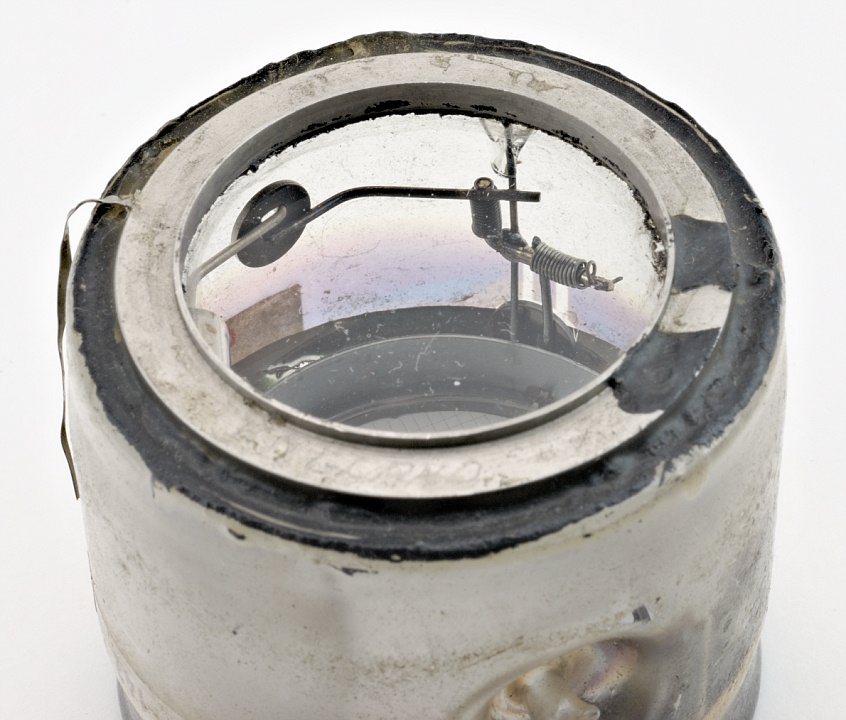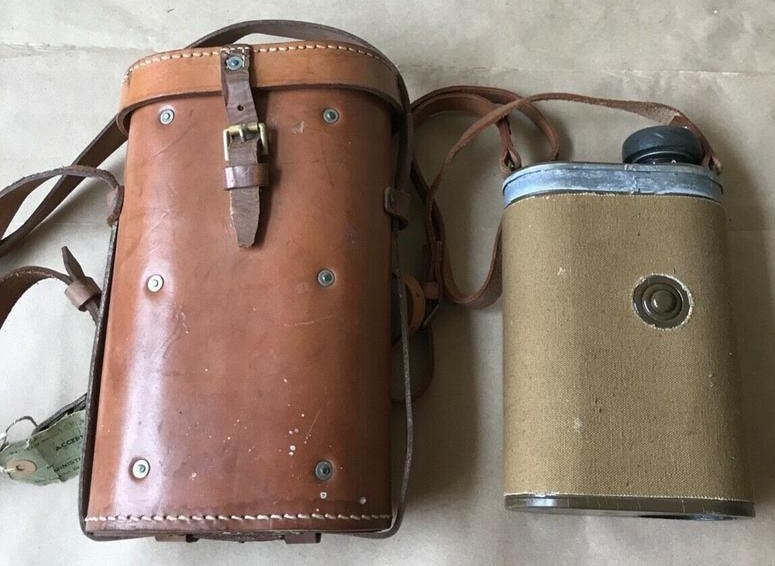CV143 Infrared Image Converter
Tube intensificateur d'image infra-rouge
Infrarot-Bildwandlerröhre
The CV14x range of infrared converter cells was developed by British EMI around 1940; the family included four CV specs, probably with different spectral response. These cells were used in the “Tabby” RAF night-driving monoculars and binoculars; they allowed a sniper to see targets at night, illuminated by an invisible infrared beam.
At one end of these high-vacuum image converters is a semi-transparent silver-oxygen-caesium film facing a cathodo-luminescent screen of zinc orthosilicate having a manganese activator which emits light in the green part of the spectrum. The phosphor screen is held in a metal ring so that it is approximately 3 mm from, and parallel to the photocathode. An electrical connection is made to the photocathode by means of a thin metal ribbon which is sealed through the glass. One of the wires that holds the support ring of the phosphor screen is lead out as its connection.
The device works with approximately 5 to 7 kV, delivered by a Zamboni pile. It only has a resolution of a few line pairs/mm.
Early cells were coated with wax, probably for corona protection.
No operational data is available.
• T. H. Pratt, An Infra-Red Image-Converter Tube, Journal of Scientific Instruments, September 1947.
• CV14x Range of Infra-red Converter Cells.
 Video on YouTube: Tabby night vision WW2 special forces and vehicle night vision
Video on YouTube: Tabby night vision WW2 special forces and vehicle night vision

Hauteur • Height • Höhe : 43 mm • 1" 3/8
Diamètre • Diameter • Durchmesser : 49 mm • 1" 7/8




Tabby Type K Monocular Infra-red receiver 1943.
Le contenu de ce site est sous copyleft  The content of this site is under copyleft
The content of this site is under copyleft  Der Inhalt dieser Website steht unter Copyleft
Der Inhalt dieser Website steht unter Copyleft
